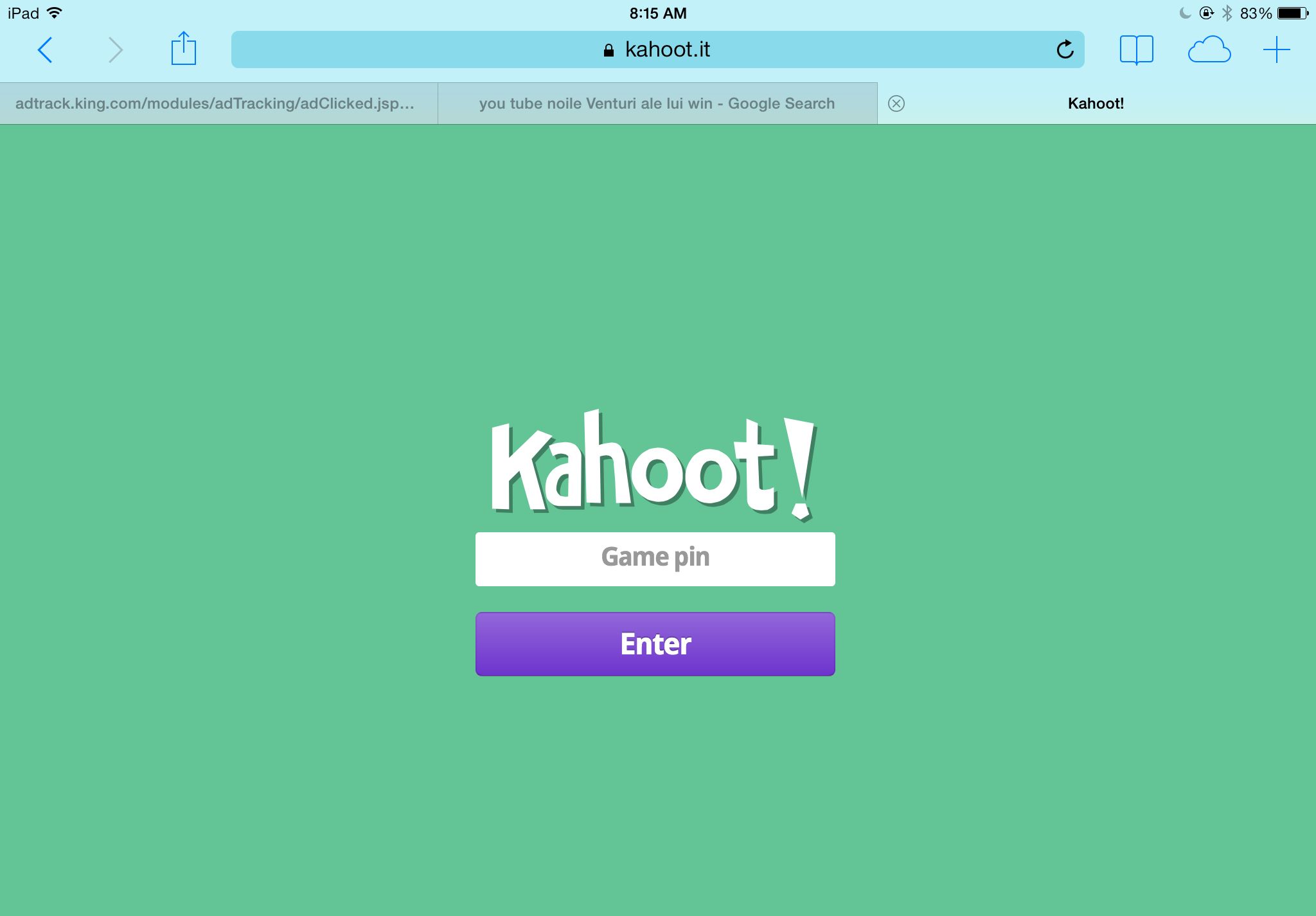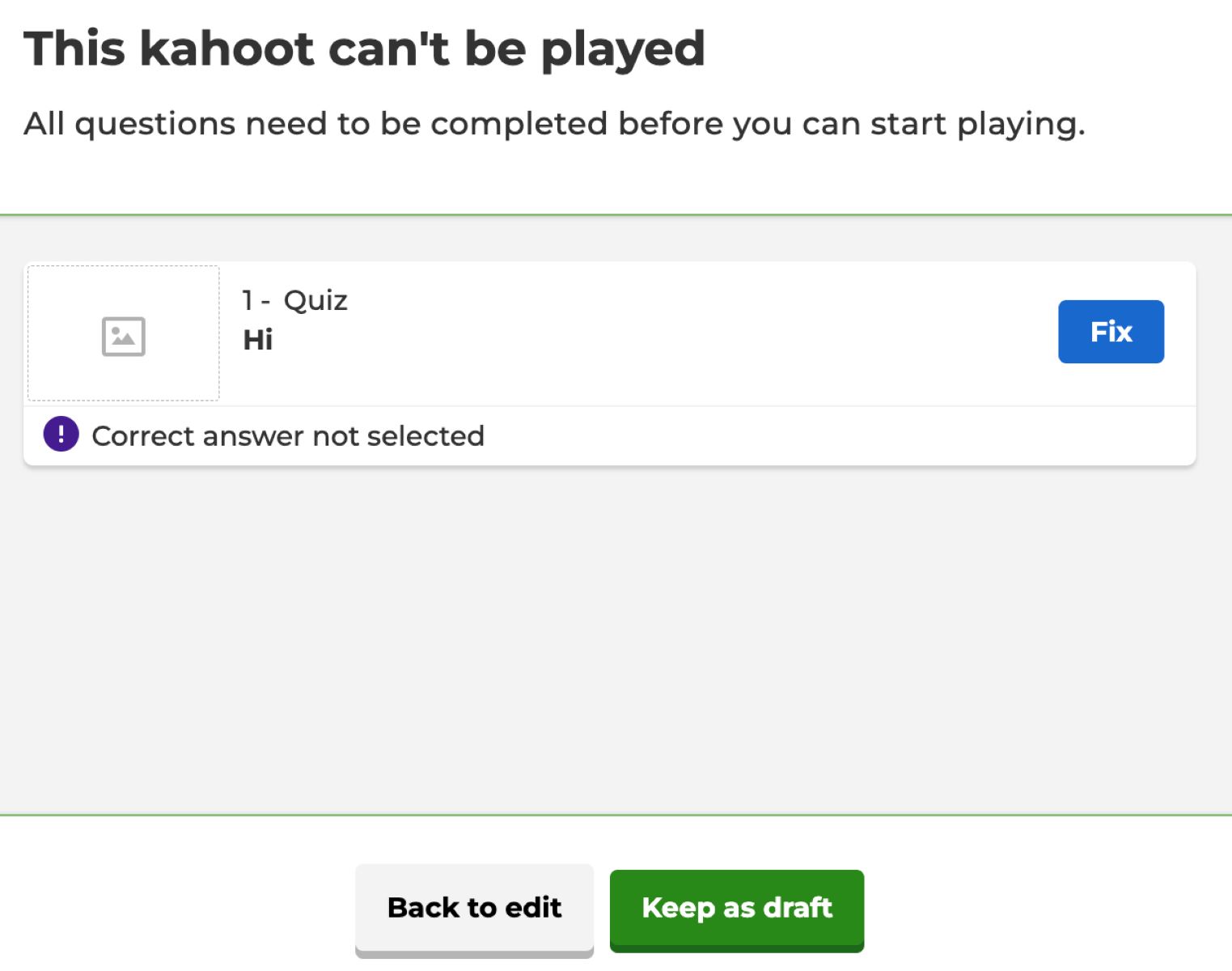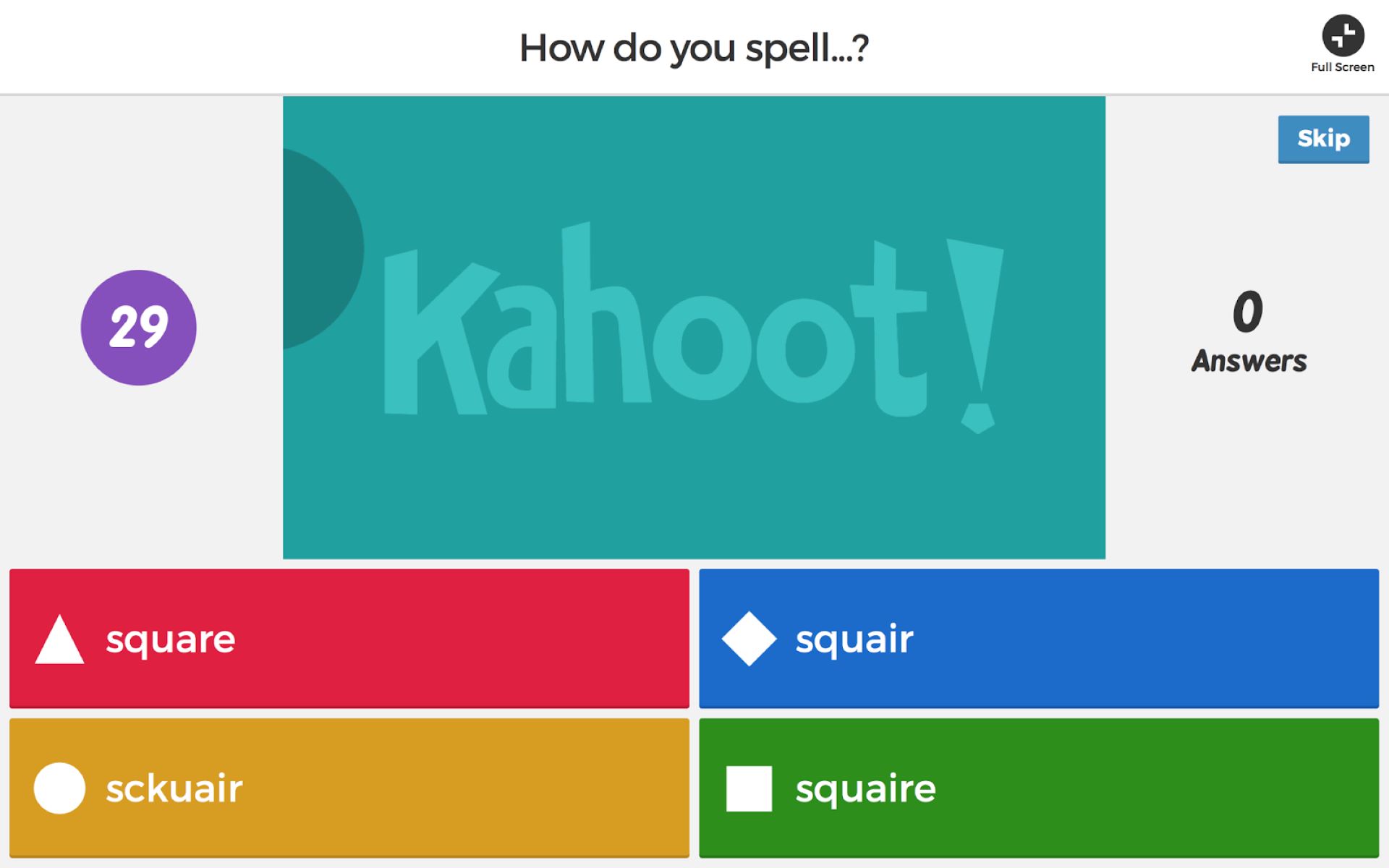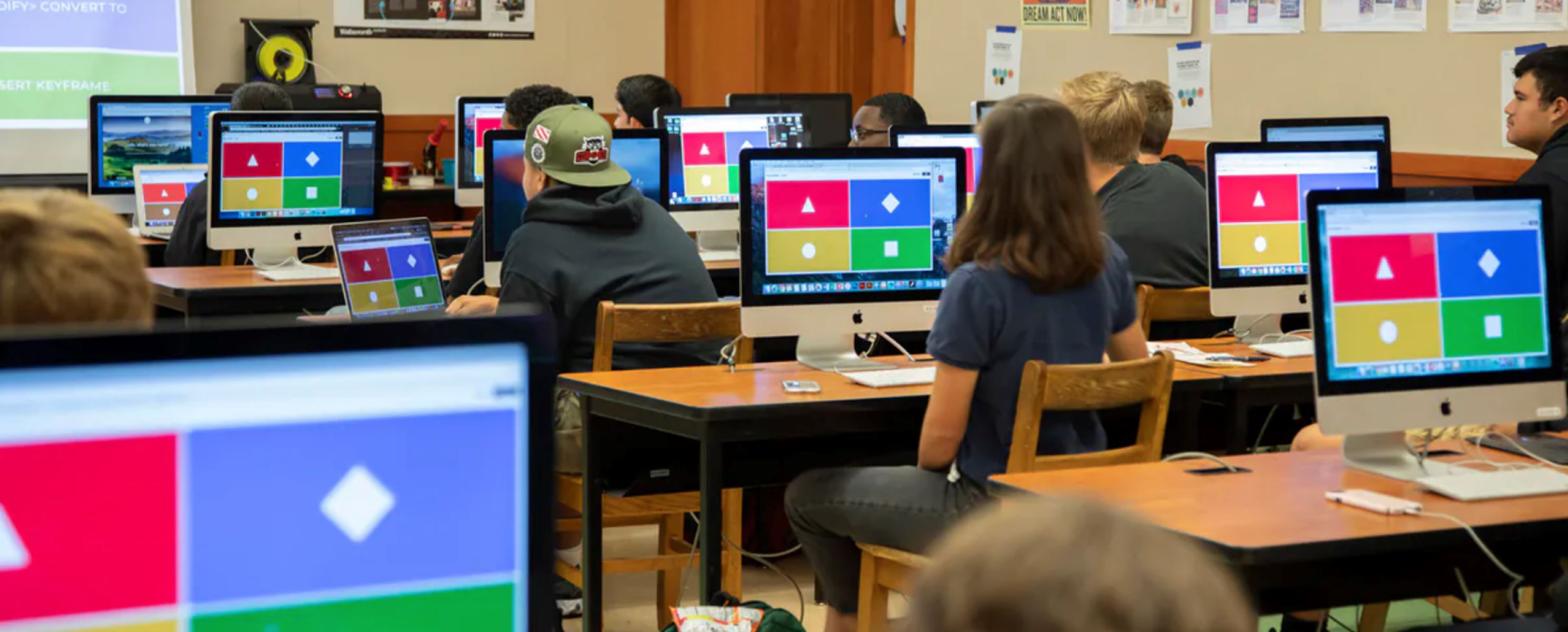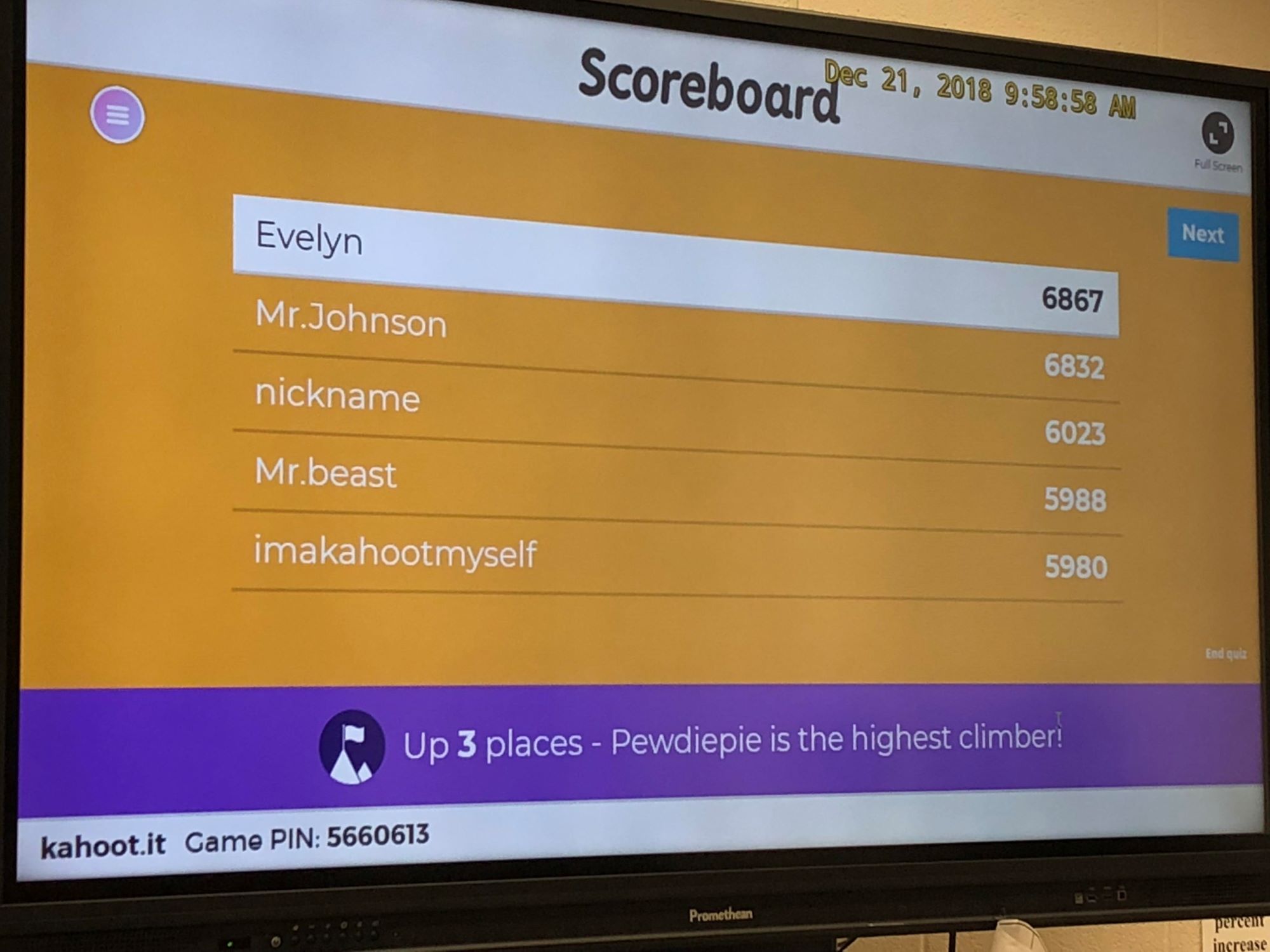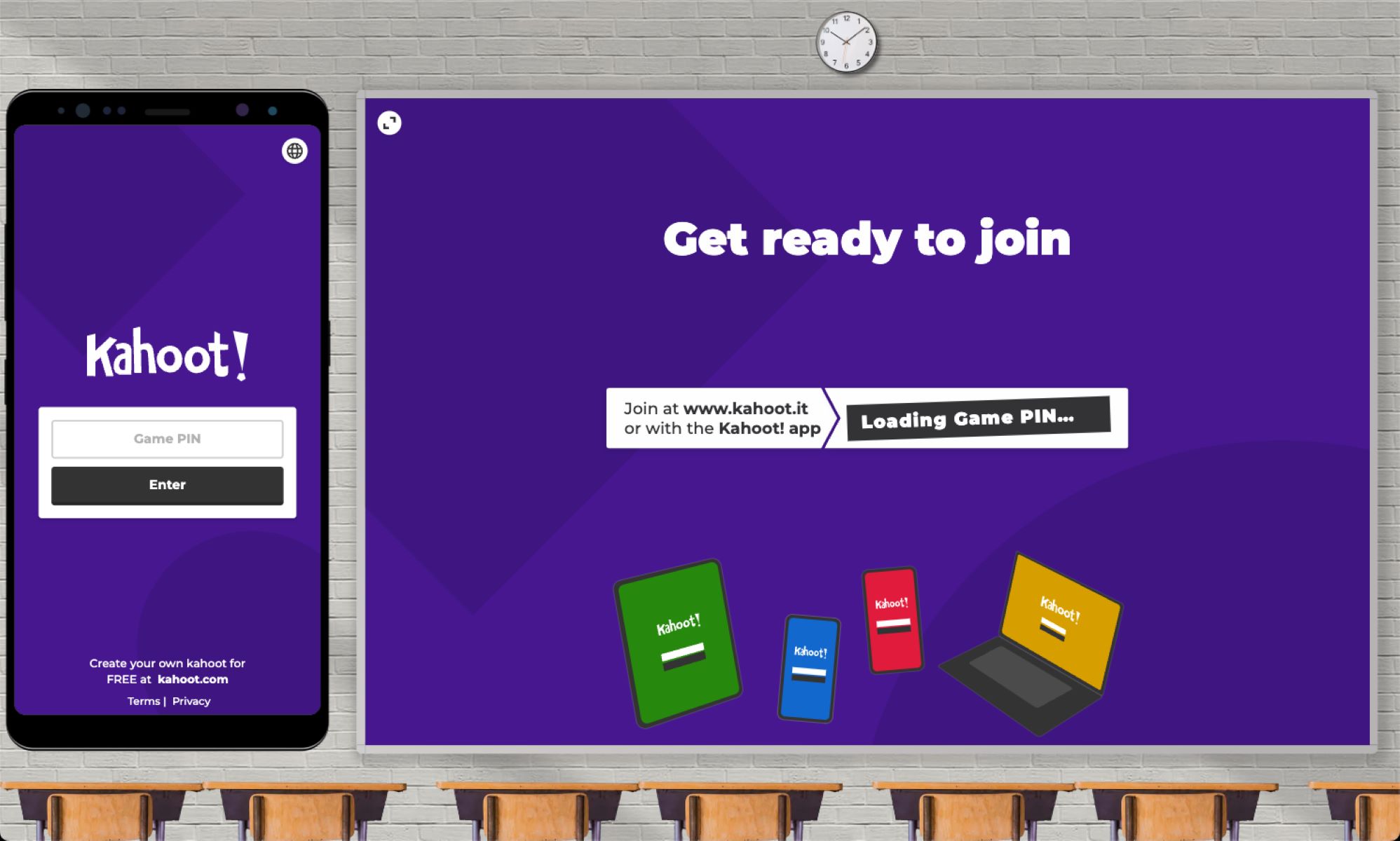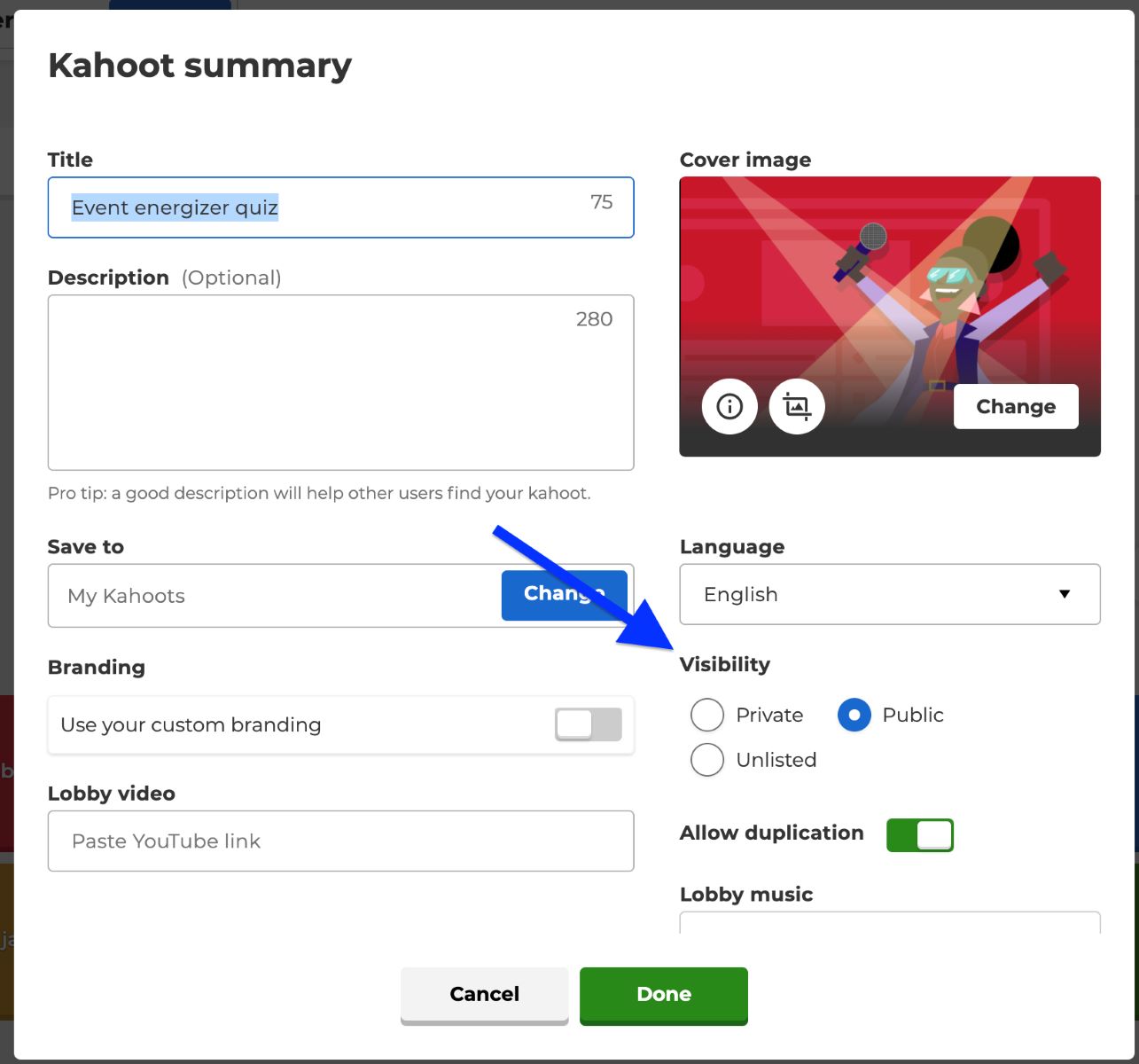Introduction
Welcome to the world of Kahoot! If you enjoy interactive games and quizzes, then you’re in for a treat. Kahoot is an online platform that allows users to create, play, and share fun learning games. Whether you’re a teacher looking to engage your students or simply someone who loves to challenge friends, Kahoot has something to offer for everyone.
With the rise of remote learning and the need for virtual engagement, Kahoot has become a popular tool for educators and individuals alike. The platform provides a seamless and exciting way to test knowledge, facilitate discussions, and have a blast while doing so.
In this article, we’ll explore the different ways you can play Kahoot, whether it’s by yourself, in small groups, or even in large gatherings. We’ll also delve into collaborative Kahoot games, challenges, and tournaments that add an extra layer of competition to the experience. Lastly, we’ll provide some helpful tips for hosting a successful Kahoot game.
So, whether you’re a Kahoot newbie or a seasoned player looking for new ideas, buckle up and get ready to dive into the world of Kahoot!
What is Kahoot?
Kahoot is an online learning platform that brings education to life through engaging and interactive games. It was created with the aim of making learning fun and accessible for everyone, whether in a classroom setting or through online learning. The platform allows users to create and customize quizzes, surveys, and discussions, turning them into exciting multiplayer games.
Using Kahoot is simple: a game host creates a set of questions on a specific topic, and players join the game by entering a unique game pin on their devices. Once the game starts, players answer the questions on their own screens, earning points for correct answers and competing against each other for the top spot on the leaderboard.
Kahoot offers a wide range of features to enhance the learning experience. Game hosts can add images, videos, and diagrams to their questions, making the game even more engaging and visually appealing. Time limits can be set for each question, adding an element of excitement and urgency to the gameplay.
One of the highlights of Kahoot is its accessibility. It can be accessed through a web browser on a computer, tablet, or smartphone, making it convenient for users to play anytime, anywhere. Whether you’re a teacher looking to engage your students during a live lesson or an individual wanting to test your knowledge on a specific topic, Kahoot offers a vibrant platform to facilitate interactive learning.
Additionally, Kahoot provides a vast library of ready-to-play games created by other educators and users. This feature allows for easy sharing and collaboration, enabling educators to find relevant games for their lessons and saving them time and effort in creating their own quizzes.
In summary, Kahoot is an innovative online learning platform that transforms traditional quizzes into exciting games. By utilizing technology and gamification, Kahoot brings a new level of interactivity and engagement to learning, making it a popular choice among educators and individuals looking to make learning more enjoyable and effective.
Kahoot for Individuals
Kahoot isn’t just for classrooms or group settings – it can also be a fantastic tool for individuals to challenge themselves and expand their knowledge. Whether you’re looking to study for a test, master a subject, or simply have some fun, playing Kahoot solo can be a rewarding experience.
When playing Kahoot as an individual, you have the option to explore the wide range of games already available on the platform. Simply search for your topic of interest, and chances are you’ll find a collection of quizzes tailored to that subject. This allows you to choose quizzes based on your preferred difficulty level, allowing you to customize your learning experience.
Playing Kahoot alone also gives you the opportunity to compete against your own scores and track your progress. By consistently challenging yourself with different quizzes and striving to improve your accuracy and speed, you can enhance your knowledge and become an expert in your chosen subject.
Furthermore, Kahoot offers a “Ghost Mode” feature which enables you to compete against your previous best score. This feature adds an element of competition and motivates you to beat your own performance, pushing yourself to answer questions faster and with more accuracy.
Another way to take advantage of Kahoot as an individual is by creating your own quizzes. By creating a personalized quiz tool, you can consolidate your learning and test your understanding of a specific topic. This self-assessment feature allows you to identify areas of strength and areas that require further study.
Overall, Kahoot for individuals presents an array of opportunities to learn and grow independently. It offers a vast collection of pre-made quizzes, a chance to compete against yourself, and the ability to create your own quizzes to reinforce your knowledge. So if you’re seeking a fun and engaging way to expand your knowledge and challenge yourself, playing Kahoot solo is a fantastic option.
Kahoot for Small Groups
Kahoot is not only enjoyable for individuals but also provides an excellent platform for small groups to engage in interactive learning experiences. Whether you’re hosting a study session with friends, conducting a team-building activity, or facilitating a workshop, Kahoot can bring a whole new level of excitement and collaboration to your small group setting.
One of the key benefits of Kahoot for small groups is the ability to foster healthy competition and team dynamics. By playing together, participants can challenge each other’s knowledge, work as a team to find the correct answers, and build camaraderie while having fun. It also encourages active participation and engagement from all group members.
When hosting a Kahoot game for a small group, you have the option to customize the questions and add a personal touch. Tailor the questions to the specific topic you’re covering or the goals of your group activity. You can even incorporate inside jokes or references that resonate with the participants, creating a more personalized and enjoyable experience.
As the game progresses, the leaderboard feature on Kahoot allows participants to see who is leading the pack and adds an extra dose of excitement to the competition. This not only ignites friendly rivalries but also motivates individuals to think quickly and strategize their answers to improve their rankings.
Moreover, Kahoot offers the option to host a self-paced challenge for small groups. This means that participants can answer questions at their own pace, allowing for flexibility and accommodating different learning styles. It also allows for reflection and discussion after each question, creating opportunities for deeper understanding and group collaboration.
Additionally, small group settings provide an ideal platform for collaborative Kahoot games. Kahoot’s team mode feature enables participants to divide into teams and work together to answer questions. This not only encourages cooperation and communication but also enhances critical thinking and problem-solving skills within the group.
Overall, Kahoot for small groups offers a dynamic and engaging learning experience. It promotes healthy competition, teamwork, and active participation. So whether you’re hosting a study group, a team-building session, or a workshop, incorporating Kahoot into your small group setting can elevate the level of interaction and enjoyment for all participants.
Kahoot for Large Groups
If you’re looking to engage a large audience or conduct an interactive event, Kahoot is a fantastic tool to captivate and involve everyone. Whether you’re organizing a conference, a company-wide training session, or a school assembly, Kahoot can turn a traditional gathering into an exciting and memorable experience.
Kahoot’s platform is specifically designed to accommodate large groups, making it easy for everyone to participate simultaneously. Participants can join the game using their own devices, such as smartphones or laptops, eliminating the need for additional equipment or resources. This scalability feature makes Kahoot an ideal choice for events and gatherings of any size.
When hosting a Kahoot game for a large group, it’s crucial to create engaging and visually appealing questions. Incorporate multimedia elements, such as images or videos, to make the game more interactive and captivating. This helps grab the participants’ attention and keeps them engaged throughout the session.
Another advantage of Kahoot for large groups is the leaderboard feature. As participants answer questions, their rankings are displayed on a real-time leaderboard, adding a sense of competition and excitement. This not only encourages active participation but also creates a lively atmosphere as participants strive to climb up the leaderboard.
Kahoot’s quiz game format is also excellent for generating discussion and interaction amongst large groups. After each question, take a moment for participants to discuss the answer options with those around them. This fosters collaboration, allows for shared learning experiences, and generates a sense of community within the group.
In addition to standard quizzes, Kahoot offers other game modes that are particularly suited for large group settings. One of these is the “Jumble” game mode, where participants must arrange answer options in the correct order. This mode encourages critical thinking and problem-solving while keeping the energy high among the participants.
Furthermore, Kahoot’s “Survey” feature allows you to gather valuable feedback and opinions from a large group of individuals. Use this feature to conduct quick polls or gather data during conferences or events, providing an interactive and inclusive environment for everyone to participate in the discussion.
Overall, Kahoot for large groups enhances engagement, generates excitement, and promotes collective learning experiences. By utilizing the platform’s scalability and interactive features, Kahoot can transform a traditional event into a dynamic and memorable occasion for participants of all ages and backgrounds.
Collaborative Kahoot
Collaborative Kahoot takes the interactive and engaging nature of the platform to a whole new level by promoting teamwork and cooperation. With collaborative Kahoot games, participants work together in teams, combining their knowledge and skills to answer questions and achieve a common goal.
One of the key benefits of collaborative Kahoot is the opportunity for participants to learn from each other. By working in teams, individuals can share their expertise, perspectives, and insights when tackling challenging questions. This collaborative environment fosters a sense of community and supports peer-to-peer learning within the group.
When hosting a collaborative Kahoot game, you can divide participants into teams and assign different roles and responsibilities. This encourages communication, leadership, and strategic thinking among team members. Each team can discuss the answer options, deliberate on the best choice, and collectively decide on the final answer, utilizing their combined knowledge and expertise.
Kahoot’s team mode feature enables teams to compete against each other and see their rankings on the leaderboard. The competitive aspect adds a thrilling element to the game and motivates teams to work together to score higher and outperform their opponents. This friendly rivalry can spark excitement and create a memorable experience during group activities.
In addition to the traditional quiz format, Kahoot offers a game mode called “Jumble.” In the collaborative Jumble mode, teams must arrange answer options in the correct order. This mode encourages teamwork, critical thinking, and problem-solving skills as teams collectively discuss and strategize to construct the correct sequence.
Collaborative Kahoot can be an excellent tool in educational settings. Teachers can use it to facilitate group discussions, encourage collaboration, and reinforce concepts taught in class. By working together in a Kahoot game, students can deepen their understanding of the subject matter and develop important teamwork skills.
Beyond the classroom, collaborative Kahoot can be utilized in professional development workshops, team-building activities, or group training sessions. By engaging participants in interactive teamwork, it promotes collaboration, communication, and problem-solving skills, fostering a positive and productive learning environment.
In summary, collaborative Kahoot games create an atmosphere of teamwork and cooperation, allowing participants to draw on each other’s strengths and knowledge. Through collaboration, participants can learn from one another, enhance their problem-solving skills, and create a sense of community within the group. So, whether in educational or professional settings, collaborative Kahoot provides an engaging and interactive way to foster teamwork and collective learning experiences.
Challenges and Tournaments in Kahoot
One of the exciting features of Kahoot is the ability to host challenges and tournaments, adding an extra level of competition and excitement to the gameplay. Whether you’re looking to test your knowledge against friends, colleagues, or even strangers, challenges and tournaments in Kahoot provide a thrilling way to showcase your skills and compete for the top spot.
Challenges in Kahoot are a great way to invite others to play your quiz and see how they fare against your score. You can create a challenge by setting a specific time limit, determining the number of attempts allowed, and sharing the challenge link or game pin with others. Participants can then take the challenge at their own convenience and see how their score compares to yours. It’s a fun and engaging way to compete with friends and see who comes out on top.
If you’re looking for a more competitive and organized experience, Kahoot tournaments are the way to go. Tournaments allow multiple players to compete against each other in real-time, answering questions simultaneously. Tournaments can be set up with different rounds and specific time limits for each question, creating a fast-paced and thrilling atmosphere.
During tournaments, participants earn points for correct answers, and the leaderboard reflects their rankings in real-time. The intensified competition and the race against time make tournaments an adrenaline-pumping experience. Whether you’re playing with a small group or a large audience, hosting a tournament in Kahoot adds a level of excitement that keeps everyone on the edge of their seats.
Furthermore, tournaments in Kahoot are versatile and customizable. You can select the number of participants, determine the duration of the tournament, and even incorporate various game modes like “Jumble” or “Team Mode” to add variety and challenge to the gameplay. This flexibility allows you to design a tournament that suits your preferences and caters to the interests of your participants.
Kahoot tournaments are not only engaging for players but also a fantastic tool for educators. Teachers can use tournaments to motivate and engage students in a competitive learning environment. It encourages students to study and review the material in preparation for the tournament, fostering a deeper understanding of the subject matter while having fun.
Overall, challenges and tournaments in Kahoot elevate the competitive spirit and provide an exciting way to test knowledge and skills. From challenging friends to hosting intense tournaments, Kahoot offers a platform that brings together fun and learning in a thrilling and engaging manner.
Tips for Hosting a Successful Kahoot Game
Hosting a successful Kahoot game involves more than just creating a set of questions. To ensure an engaging and enjoyable experience for your participants, consider implementing the following tips:
1. Choose the right topic: Select a topic that is relevant and interesting to your audience. This will pique their curiosity and motivate them to participate actively in the game.
2. Incorporate multimedia: Add images, videos, and diagrams to your questions to make the game visually appealing and enhance the overall experience for the participants.
3. Set a suitable time limit: Balance the time given to answer each question, keeping in mind the difficulty level and complexity of the topics. Avoid making the time limit too long or too short to keep the game moving at a good pace.
4. Create a mix of question types: Utilize a variety of question formats, such as multiple choice, true/false, and fill in the blank. This adds variety to the game and keeps participants engaged throughout.
5. Provide clear instructions: Begin the game with a set of clear instructions so that participants understand how to join, answer questions, and navigate through the game. This minimizes confusion and allows for a smooth gameplay experience.
6. Encourage friendly competition: Emphasize that the game is meant to be fun and encourage participants to compete with each other in a friendly and respectful manner. This will create an exciting and positive atmosphere during the game.
7. Offer incentives: Consider offering small prizes or rewards to the top performers in the game. This can motivate participants to strive for higher scores and add an extra layer of excitement to the gameplay.
8. Provide immediate feedback: After each question, provide immediate feedback to let participants know whether their answer was correct or incorrect. This helps reinforce learning and allows participants to understand the correct answers.
9. Customize your Kahoot game: Take advantage of Kahoot’s options to customize the game, such as adding your own branding or tailoring the game to match a specific theme or event. This personalization creates a unique and memorable experience for participants.
10. Reflect and improve: After hosting a Kahoot game, gather feedback from participants and reflect on what worked well and what could be improved. Take note of their suggestions and apply them to future games to continually enhance your hosting skills.
By following these tips, you can host a successful Kahoot game that engages participants, promotes learning, and creates a memorable experience for all involved.
Conclusion
Kahoot is a powerful and versatile platform that brings learning to life through interactive games and quizzes. Whether you’re playing as an individual, in small groups, or in large gatherings, Kahoot offers a range of features and game modes to suit your needs. Collaborative Kahoot games foster teamwork and cooperation, while challenges and tournaments add an element of excitement and competition.
To host a successful Kahoot game, it’s important to choose engaging topics, incorporate multimedia elements, and provide clear instructions. Balancing the time limit, offering incentives, and customizing the game can enhance the overall experience. Reflection and feedback are crucial for continuous improvement in hosting Kahoot games.
Whether you’re a teacher looking to engage your students, an individual seeking a fun way to test your knowledge, or a group aiming to build team dynamics, Kahoot provides a vibrant and interactive learning environment. Through its gamified approach, Kahoot makes learning enjoyable and fosters a sense of community and collaboration.
With its accessibility and flexibility, Kahoot allows individuals of all ages and backgrounds to participate and learn in a fun and engaging way. So, whether you’re hosting a study session, conducting a training session, or simply looking for some educational fun, Kahoot offers a dynamic platform to facilitate interactive learning and create a memorable experience for all.







